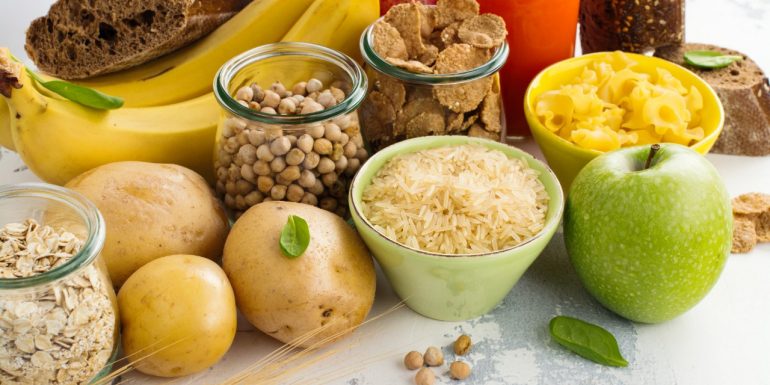
Saturated and unsaturated fatty acids: healthy or not?
Fats perform essential tasks in the body. But which fats are the healthiest and how much should we be consuming every day? Find out more about saturated and unsaturated fatty acids in food and their role in a balanced diet.
What are fats?
In addition to protein and carbohydrate, fat is one of the three main nutrients in the human diet. Fat is the nutrient that provides the body with the most energy: 1 gram of fat contains 9 kilocalories – that’s twice as many kilocalories as provided by proteins and carbohydrates.
What does the body need fat for?
- Transporting vitamins: fat transports the fat-soluble vitamins A, D, E and K that the body needs for various metabolic processes.
- Flavour and aroma enhancers: fat brings out the flavour of food and makes dishes more aromatic.
- Organ protection: the fatty tissue in the body insulates and cushions the internal organs.
- Temperature regulation: fat helps to regulates the body’s core temperature.
- Energy storage: fat stores excess energy that can be released again when needed.
- Constituent part of hormones: fats are key to the formation of hormones like oestrogen and testosterone, which regulate many bodily functions.
What are fatty acids?
Fats consist of fatty acids, among other things. Fatty acids can be divided into three main groups: saturated, monounsaturated and polyunsaturated fatty acids. The polyunsaturated omega-3 and omega-6 fatty acids are classed as essential fatty acids. What are essential fatty acids? These are fatty acids that are vital because the body cannot produce these itself, meaning we have to obtain these from the food we eat. However, our body can produce non-essential fatty acids itself. While our health is influenced by the total amount of fat we consume, it is also impacted by how much of each type of fatty acid foods contain.
Saturated and unsaturated fatty acids
The difference between saturated and unsaturated fatty acids is in their reactivity. Mono and polyunsaturated fatty acids are reactive. The body therefore uses them for many organic processes. Saturated fatty acids, on the other hand, are inert, i.e. not chemically reactive. Nevertheless, they also play important roles.
What are saturated fatty acids?
The body mainly uses saturated fatty acids as a source of energy, but they also help to fix organs in the right place and protect them.
So are saturated fatty acids healthy? Saturated fatty acids are classed as unhealthy fats. If you consume too many saturated fatty acids from food, that raises your level of LDL cholesterol. This also increases your risk of cardiovascular diseases and diabetes. But at the same time, these fatty acids also serve as messenger substances for the nervous system. In this respect, saturated fatty acids are healthy, but only in moderation.
Note that saturated fats do not contain any double bonds between carbon atoms – this is why there are no polysaturated fatty acids.
What are monounsaturated fatty acids?
Just like saturated fatty acids, monounsaturated fatty acids primarily provide the body with energy. Examples of this type of fat include oleic (omega 9) and palmitoleic acid.
Are monounsaturated fatty acids healthy? Monounsaturated fatty acids are classed as healthy because they may reduce the level of LDL cholesterol and counteract the risk of cardiovascular disease.
What are polyunsaturated fatty acids?
Polyunsaturated fatty acids feature at least two double bonds in their hydrocarbon chain.
Why are polyunsaturated fatty acids so healthy? The body uses polyunsaturated fats from food to create essential tissue hormones which regulate inflammation, for example. The polyunsaturated fatty acid docosahexaenoic acid (DHA) also contributes to brain development and supports the heart and the immune system. What are some examples of healthy fats? Omega-3 fatty acids and omega-6 fatty acids are polyunsaturated and therefore part of a balanced diet. See the list below for information about polyunsaturated, essential fatty acids:
- Omega-3 fatty acids, e.g. in walnuts, tuna and flaxseed
- Omega-6 fatty acids, e.g. in sunflower oil, sunflower seeds and rye
Trans-fatty acids are altered unsaturated fatty acids. They are produced when oils are industrially hardened, refined or deodorised. This latter process is where manufacturers intentionally seek to cover up specific odours. Too much heat can also convert oils with a high proportion of unsaturated fatty acids into TFA. They occur naturally in the digestive systems of ruminant animals such as cows, sheep and goats. Trans-fatty acids increase the risk of cardiovascular diseases. Trans fats are found in baked goods, muesli bars, butter, milk and dairy products and in meat.
How much fat does the body need?
How many grams of fat you should consume a day depends on your energy requirements. In a balanced diet, fats should cover 20 to 30% of your daily energy intake. With a total intake of 2,000 kilocalories, that’s about 44 to 78 g of fat per day. This amount should be split across the different fatty acids as follows:
- Saturated fatty acids: < 10%
- Monounsaturated fatty acids: 10 to 15%
- Essential omega-3 fatty acids: approx. 0.7%
- Essential omega-6 fatty acids: 2.5 to 9%
Note that the Western diet is characterised by a major imbalance between omega-6 and omega-3 fatty acids. It is too rich in omega-6 fatty acids, which consist primarily of meat, and low in omega-3 fatty acids.
What is the recommended daily fat intake per kg of body weight? As a general rule, you should consume 1 gram of fat for every 1 kilogram of body weight, but no more than 60 to 80 grams.
Saturated and unsaturated fatty acids in food
Saturated or unsaturated, healthy fats are important. But which foods contain healthy fats? Saturated and unsaturated fatty acids are found in various different foods.
Foods with saturated fatty acids
Saturated fatty acids are primarily found in animal and processed foods. These foods contain saturated, non-essential fatty acids:
- Meats and sausages
- Butter
- Milk and dairy products
- Coconut oil
- Ready meals
Foods with monounsaturated fatty acids
Monounsaturated fatty acids are found in many foods. This table shows foods that contain a lot of monounsaturated fatty acids:
|
|
|
|---|---|
|
|
|
|
|
|
|
|
|
|
|
|
|
|
|
Food
Monounsaturated fatty acids (g/100g)
Olive oil
70,6
Rapeseed oil
57,9
Sunflower oil
46,2
Almonds
33,6
Cocoa butter
32,9
Polyunsaturated fatty acids in foods
Polyunsaturated fats are found in a variety of foods too. This table shows foods that contain a lot of polyunsaturated fatty acids:
|
|
|
|---|---|
|
|
|
|
|
|
|
|
|
|
|
|
|
|
|
|
|
|
Food
Polyunsaturated fatty acids (g/100g)
Flaxseed oil
67,1
Corn oil
56,6
Walnuts
52,0
Flaxseed
20,9
Chia seeds
19,0
Salmon
2,9
Short-chain fatty acids are fatty acids that contain less than 6 carbon atoms. These good fats have a positive impact on gut health. There is no food list for short-chain fatty acids. That’s because these healthy fats are generally formed in the gut from indigestible carbohydrates (fibre).
Incorporating healthy fats into your diet
Most of us consume too many saturated fatty acids. Try to replace foods with too many saturated fatty acids with foods with more unsaturated fats, for example:
- Plant-based fat instead of animal-based fat
- Cook your food in rapeseed oil instead of concentrated butter
- Fish instead of meat
- Nuts instead of chocolate and biscuits
- Cold-pressed vegetable oils on salads instead of yoghurt or French dressing
- Plant-based spreads instead of cheese or salami
Refer to a dietitian or nutritionist if you need support in changing your diet. We’ll cover 75% of the costs under SANA and COMPLETA supplementary insurance. That applies to all nutrition counselling services recognised by us.
Fats are key to a balanced diet, but it’s all about finding the right proportions. Opt for unsaturated instead of saturated fatty acids wherever possible – to benefit yourself and your body.

Expert who provided the editorial team with advice and input for this article. Séverine Godar (SVDE nutritionist, micronutrient therapist) works in the Helsana Health Consultation Service. She helps customers on issues to do with nutrition and health promotion.


Newsletter
Find out more about current health issues every month and get all the information you need about our attractive offers from all Helsana Group companies * delivered by e-mail to read whenever it suits you. Our newsletter is free of charge and you can sign up here:
We did not receive your information. Please try again later.
* The Helsana Group comprises Helsana Insurance Company Ltd, Helsana Supplementary Insurances Ltd and Helsana Accidents Ltd.